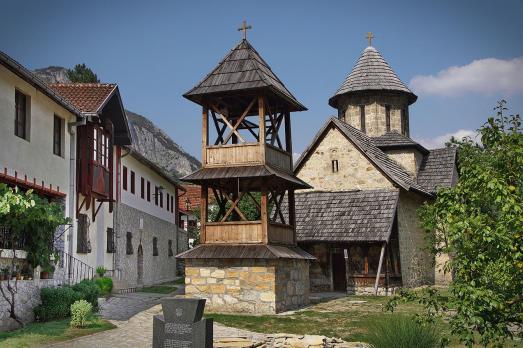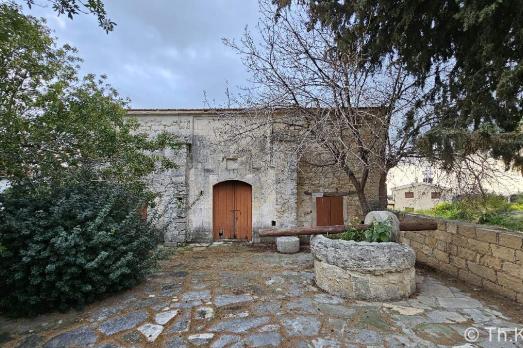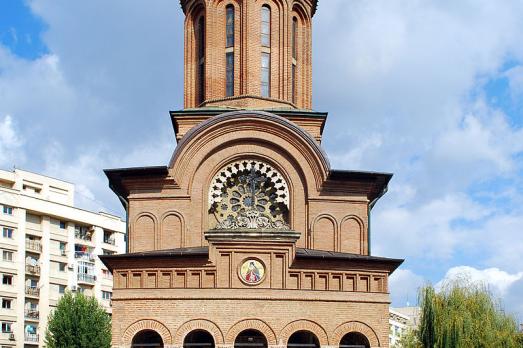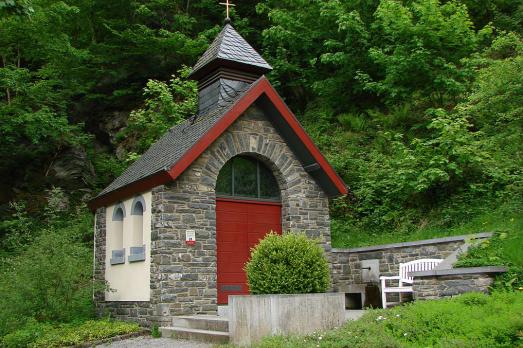Annour Moskee
s-Gravenhage, NL
Moroccan mosque, with minaret and dome.
Here you can search for a building to visit. You can use the map find destinations, or you can use the filters to search for a building based upon what different criteria.
s-Gravenhage, NL
Moroccan mosque, with minaret and dome.

Kharkiv, UA
The St. Annunciation Cathedral of the city of Kharkiv is the largest cathedral in Eastern Europe. The first church was founded around 1655 but the current structure was completed in the late 19th century.

Ovcar Banja, RS
The Monastery of the Annunciation dates back to the 12th century. The church of the monastery has a cross-shaped base with an apse to the east. To the west is a porch with wooden pillars. An inscription above the entrance door on the west wall of the church, in the porch, indicates that the church was built in 1602.

Anogyra, CY
The mosque of Anogyra is located at the southern end of the village center, on the access road from Agios Thomas.

Bucharest, RO
The Antim monastery was built between 1713 and 1715 on the site of an old wooden church dedicated to St. Nicholas. It is a Romanian National Monument.
Forest, BE
The Antoinist church on Boulevard Guillaume Van Haelen was built in an eclectic style in 1915 by the architect Charles Rifflart. The Antinista cult is a Christian-inspired healing cult founded in 1910 by Louis-Joseph Antoine (1846-1912) in the province of Liège. It is characterised by simple rites. It is the only religion born in Belgium and whose fame and success has spread beyond the borders. The Antoinist church of Forest was desecrated in 2016 and now hosts exhibitions and other events.

Monschau, DE
Antoniuskapelle (Antonius chapel) is a chapel built on the banks of the river Rur, near the German town of Monschau.
Sinderen, NL
According to the stone above the entrance, this church dates from 1662, it belonged to the former Sinderen castle. It stands on the site where a wooden chapel used to stand, dedicated to Saint Anthony Abbot, which was destroyed by a storm. This chapel was first mentioned in the year 1152. At that time, it fell under the bishopric of Münster. It is known that the Catholics from Terborg and the surrounding area took refuge in this chapel in 1674. There is a burial vault under the church, where people from the castle are buried. In the cemetery behind the chapel, there are also six burial vaults, also belonging to the noble family. The large tombstone with the marble butterfly on the grave of Bertha Antoinette Louisa Ruebel is striking.
s-Hertogenbosch (Bokhoven), NL
Roman Catholic Church of St. Anthony Abbot. Consisting of an early 15th century tower with later staircase tower, single-aisled nave, built after a fire in 1498, a transept and choir from 1610. Vaulted baptismal chapel from around 1500. Internally a stucco vault from 1771 with rococo ornamentation. Restoration completed in 1951 after war damage in 1944-1945. Rich inventory, which includes: Baroque wooden altarpiece from around 1700, with a statue of St. Michael in the frontispiece, originating from the Michael's Church in Dennenburg, organ from around 1700, also from the church of Dennenburg; the former main altar, early 18th century, now in the transept, with painting on canvas; Mary's Assumption, attributed to Th. van Thulden, circa 1650; tomb of various colours of marble with the recumbent statues of Engelbert van Immerzeel, first count of Bokhoven (circa 1652) and his wife Helene de Montmorency (ca 1649), made in 1649-1651 by Artus Quellien the Elder; carved oak pulpit with scenes from the life of St. Norbertus; wooden statues of Cornelis (circa 1730), Maria (1650), Guardian Angel (circa 1700), a group of four belonging together from around 1800: Herman Jozef, Antonius van Padua, Roches and Martinus; Norbertus and Antonius Abt (both circa 1700), Antonius Abt (circa 1500); oak Stations of the Cross reliefs by G. Lucius from 1851-1852, 19th century terracotta statue of an apostle, wooden Cornelius statue from 1846, renaissance oak crucifix and a wooden crucifix from around 1700; carved oak communion rail in Waterstaat style; eight 17th century copper candlesticks, 18th century copper chandelier. Late Gothic wrought iron gate for the stair tower and the baptistery. Many gravestones, including those of the lords of Bokhoven.
Paesens, NL
This church was built in 1250 as a Catholic church. After the Reformation in 1580, the church was given the status of Dutch Reformed. The construction was largely carried out by monks and built with monastery bricks, also called 'old Frisians'. It is very likely that the diocese of Utrecht, to which the region belonged ecclesiastically, had such a large financial share in the construction. The architectural style is Romanesque, with a saddle roof tower until 1972 and (still) a fishing boat, a so-called 'snik', covered with gold leaf, as a weather vane. The tower was also a beacon and landmark for sea fishing. On the west side of the tower, a facade stone can be seen with the names of the minister and churchwardens present at the time. On the north and south sides, the former entrance gates to the church can be clearly seen. At that time, women and men sat separately in the church. On the north wall hang two boards with the names of ministers who served the community. (Source ANWB)

new
Nestled amidst the serene landscapes of the Harz region, lies a hidden gem for nature enthusiasts and history buffs alike - the Harz Monastery Hiking Trail. Lace up your hiking boots and embark on this captivating adventure that will transport you back in time.

The Holy Mile (Miglio Sacro) of Naples is a one-mile-long itinerary, through sacred places linked to the city's patron saint, San Gennaro, in the Rione Sanità district. Discover the city from a new perspective with this unique walking tour.

As a university city, cultural offerings abound in Tartu and will reach their peak after being designated one of three European Capitals of Culture for 2024. In this list, we've compiled the most interesting sacred places to visit in and around the old town.